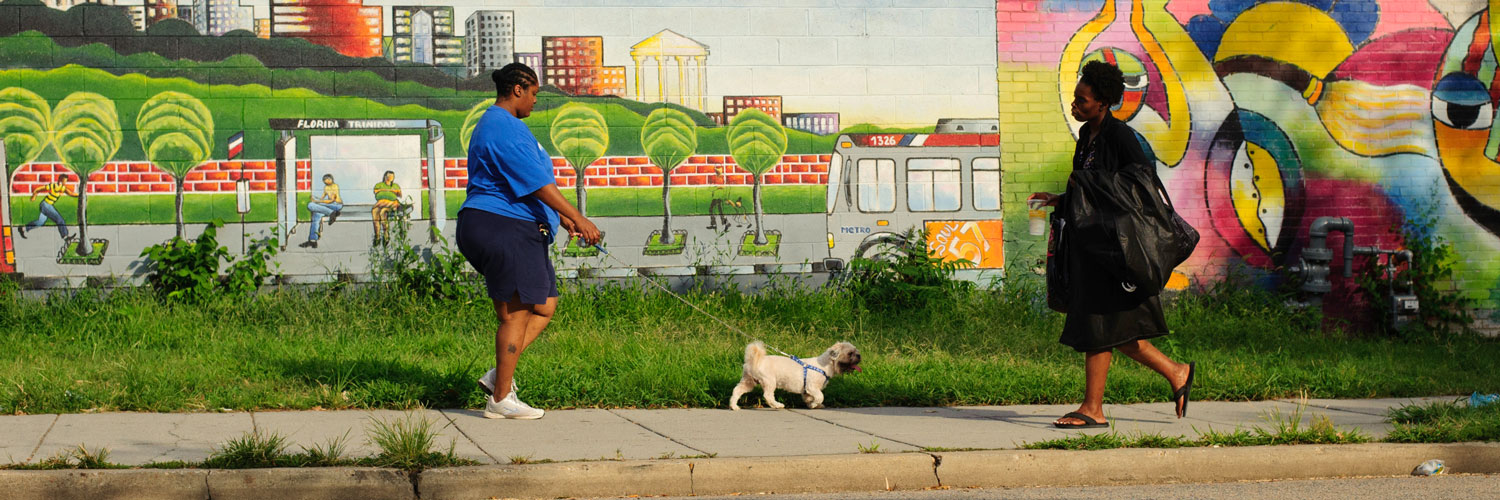
This post was originally published on NextCity.org
Disaggregating, or breaking down, data tells us that white voters without college degrees in the United States “shifted decisively” in favor of the Republican nominee for president in 2016. But disaggregating data is useful for much more than analyzing election results. It can help policymakers, philanthropists, government agency staff, nonprofit service providers, and community organizers identify and, ultimately, tackle inequities that city- or county-level data often conceal. We need to ensure that data are disaggregated because what gets measured is more likely to get addressed.
In that light, a new interactive tool from the Urban Institute, A Vision for an Equitable DC, allows users to explore racial inequities in unemployment, income, housing, health, and education in Washington, DC, at both the council ward and city levels. The feature (commissioned by the Consumer Health Foundation and the Meyer Foundation) breaks down data to demonstrate that DC could be a more prosperous and competitive city for everyone if all its residents had the opportunity to reach their full potential.
Without disaggregated data on education, one might think all is well when it comes to education in the city. However, the feature makes it clear that the education-equity gap is one of DC's biggest challenges because it contributes to racial inequities in everything from jobs to health.
Eighty-nine percent of adults ages 25 and older in DC have a high school diploma or GED, compared with 86 percent nationwide. DC's educational advantage is even more striking when it comes to higher education: 70 percent of adults have at least some college education versus 58 percent across the US. But these seemingly positive statistics mask DC’s stark racial inequities in education.
When disaggregated, the data reveal substantial differences in educational attainment by race and ethnicity. Nearly all non-Hispanic white adults (99.5 percent) in DC have high school degrees, while only 83 percent of black adults and 69 percent of Hispanic adults have high school degrees. Further, 97 percent of DC’s white adults have some college education, compared with 50 percent of black adults and 54 percent of Hispanic adults.
Besides disaggregating the data to highlight the inequities, the feature shows what an equitable DC would look like if the city were to close the gap between its black and Hispanic residents and its white residents. For example, in an equitable DC, roughly another 33,000 black residents and 12,000 Hispanic residents would have high school degrees. Approximately 98,000 more black residents and 17,000 more Hispanic residents would have some postsecondary education. Knowing the number of people the gap represents is important because it further emphasizes the need for new solutions.
This graphic shows what educational attainment for adults 25 and older would look like in an equitable D.C.
People working to create better policies should use disaggregated data to help evaluate whether current laws, regulations, practices and funding are perpetuating inequities or helping to eliminate them. Cities such as Seattle and Madison, Wisconsin, are already using racial equity assessments, which rely on disaggregated data, to make progress on racial equity and are being intentional about including racial equity as a policy outcome.
DC is beginning to move in the right direction as well. Over the past few years, conversations among philanthropies, nonprofits ,and the city government have started exploring how to include racial equity and inclusivity as a goal of planning, redevelopment, and economic growth.
But there is still much left to do. And, we must remember that disaggregating data and using disaggregated data to monitor progress is integral to eliminating inequities—because if they are seen and understood, they are more likely to be addressed.
Tune in and subscribe today.
The Urban Institute podcast, Evidence in Action, inspires changemakers to lead with evidence and act with equity. Cohosted by Urban President Sarah Rosen Wartell and Executive Vice President Kimberlyn Leary, every episode features in-depth discussions with experts and leaders on topics ranging from how to advance equity, to designing innovative solutions that achieve community impact, to what it means to practice evidence-based leadership.